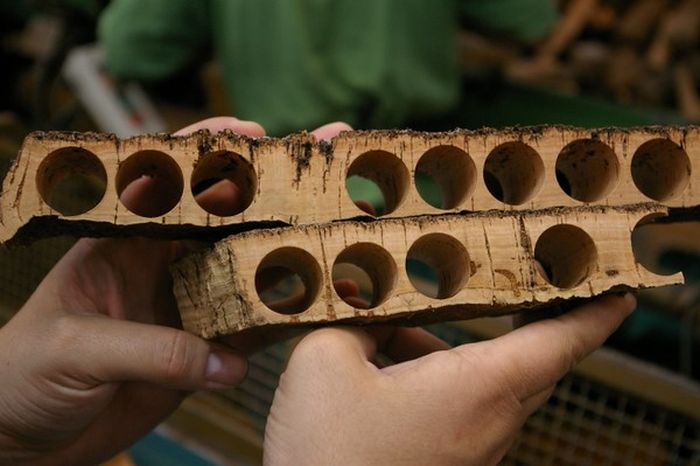|
|
Quercus Suber, Cork Oak, Spain
|
The tree forms a thick, rugged bark containing high levels of suberin. Over time the cork cambium layer of bark can develop considerable thickness and can be harvested every 9 to 12 years to produce cork. The harvesting of cork does not harm the tree, in fact, no trees are cut down during the harvesting process. Only the bark is extracted, and a new layer of cork regrows, making it a renewable resource. The tree is cultivated in Spain, Portugal, Algeria, Morocco, France, Italy and Tunisia. Cork oaks are considered to be soil builders and their fruits have been shown to have useful insecticidal properties. Cork oak forests cover approximately 25,000 square kilometres in those countries (equivalent to 2,500,000 hectares). Portugal accounts for around 50% of the world cork harvest. Cork oaks cannot legally be cut down in Portugal, except for forest management felling of old, unproductive trees, and, even in those cases, farmers need special permission from the Ministry of Agriculture.
Cork oaks live about 150 to 250 years. Virgin cork (or 'male' cork) is the first cork cut from generally 25-year-old trees. Another 9 to 12 years is required for the second harvest, and a tree can be harvested about twelve times in its lifetime. Cork harvesting is done entirely without machinery, being dependent solely on human labor. Usually five people are required to harvest the tree's bark, using a small axe. The process requires training due to the skill required to harvest bark without harming the tree. The European cork industry produces 300,000 tonnes of cork a year, with a value of €1.5 billion and employing 30,000 people. Wine corks represent 15% of cork usage by weight but 66% of revenues.
Cork oaks are sometimes planted as individual trees, providing a minor income to their owners. The tree is also sometimes cultivated for ornament. Hybrids with turkey oak (Quercus cerris) are regular, both in the wild in southwest Europe and in cultivation; the hybrid is known as Lucombe oak Quercus × hispanica. Some cork is also produced in eastern Asia from the related Chinese cork oak (Quercus variabilis)
|
|









